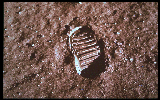
ScienceEarth and Space Science - Origin and evolution of the earth system
Unifying Concepts and Processes - Evidence, models, and explanation
Science as Inquiry- Abilities necessary to do scientific inquiry; understanding about scientific inquiry
Science and Technology - Abilities of technological design; Understanding about Science and TechnologyMathematics
Algebra - Use tables and graphs as tools to interpret expressions, equations, and inequalities
Geometry - Visualize and represent geometric figures with special attention to developing spatial sense, represent and solve problems using geometric models.Technology
Communications Tools - Routinely and efficiently use online information resources to meet needs for collaboration, research, publications, communications, and productivity.
Research Tools - Use content-specific tools, software and simulations (e.g., environmental probes, graphing calculators, exploratory environments, Web tools) to support learning and research; research and evaluate the accuracy, relevance, appropriateness, comprehensiveness, and bias of electronic information sources concerning real-world problems.
Objective(s):
As a result of engaging in these activities, students will gain knowledge of terrestrial impact craters. In addition, the students will become aware of environmental, technical, and equipment needs for a permanent settlement based on the moon.
In the pre-conference activity, students will gain an understanding of the nature of impact craters by simulating an impact environment using common household materials. In the post-conference activity, students will apply their new knowledge of the moon in the designing of a prototype moonbase and transportation vehicle. The purpose of this activity is to promote student awareness of research and technologies involved in the development of self-contained environments, which will most likely be a part of future space endeavors.
Evaluation:
Students will be evaluated on their ability to successfully complete the pre- and post-conference activities. They will also be evaluated on the accuracy or feasibility of their answers in the post-conference assessment.
Submitted by: Niki Barnes and Matt McCormick, University of Akron, Akron,
Ohio.
|
|
|
|
Please send any comments to:
Web site related: Curator
Content related: Bryan Palaszewski (Bryan.A.Palaszewski@nasa.gov)